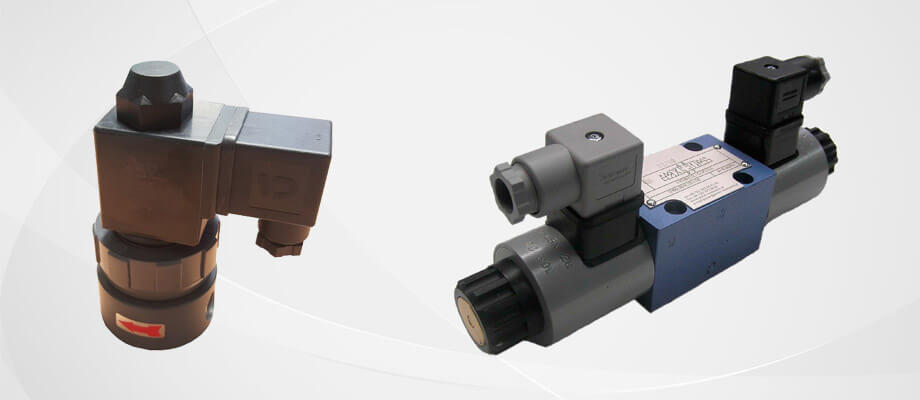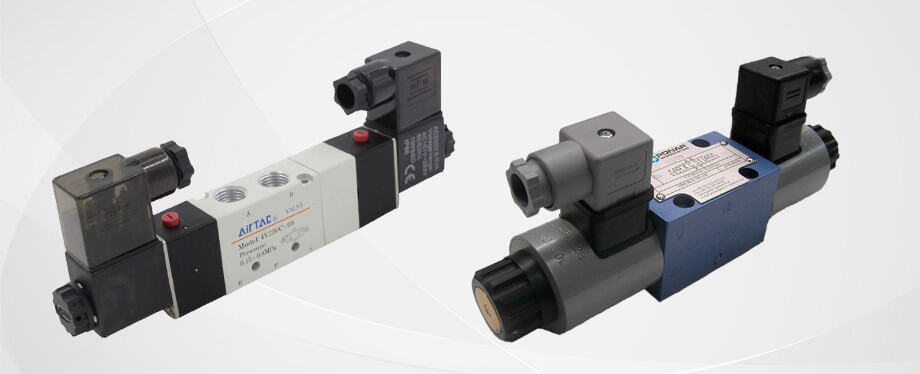Solenoid valve is the most common engineering element in different industries, the mechanical engineers in many different plants are dealing with solenoid valves every day. Solenoid valve is the basic automatic element which controls the fluids. Solenoid valves can be used in both pneumatic and hydraulic valves. In industrial control systems, solenoid valve is used to adjust the directions, flow, speed and other parameters of the medium. Solenoid valves can be used in different circuits to realize the anticipated control and ensure the control accuracy and flexibility.
Solenoid Valve Working Principle
There is an airtight space in solenoid valves, and some holes have been opened on different positions. Each hole has been connected to different oil pipes. In the middle of the airtight space, there is a piston, and two solenoids have been placed on both the ends of the solenoid valve. Which solenoid has been electrified, the valve body will be driven to the electrified side. The oil supply holes open continuously, but the movement of valve body can control the open and close functions of different oil outlets. Therefore, hydraulic oils will enter into different oil outlets, and push the piston of oil cylinder through the oil pressure, the piston drives piston rod, piston rod drives the mechanical device. In that way, we can control the mechanical motions of machines through the on and off functions of solenoids. As an actuator of solenoid valves, there are different types of solenoids for different types of solenoid valves. For solenoid valves for hydraulics, we use hydraulic solenoid as their actuators, and for pneumatic solenoid valves, we use pneumatic solenoid to trigger the valve.
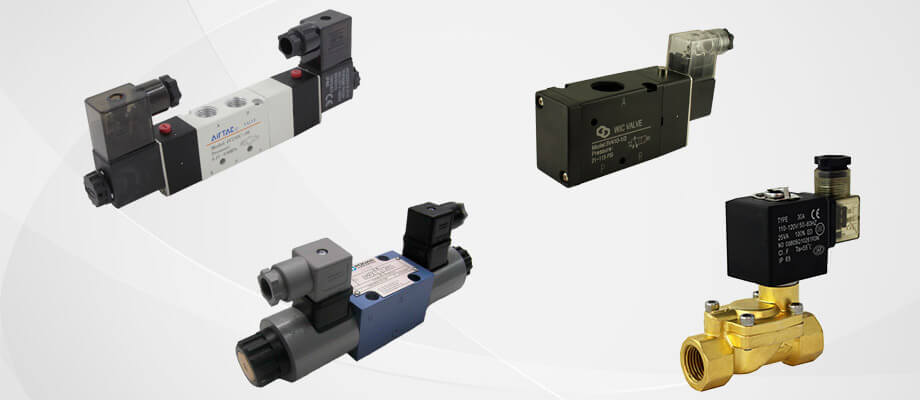
Different Solenoid Valve Types
In the former articles, we have discussed different solenoid types. About the solenoid valves, it can be divided into three types based on their different working principles.
Direct Operated Solenoid Valve
When direct operated solenoid valves have been electrified, the solenoid coil will create electromagnetic force that can lift the turn off prop from the valve seat, and the valve opened. When the electricity is cut off, the electromagnetic force is gone, the spring will push the turn off prop back to the valve seat, and the valve closed.
Direct operated solenoid valves can work stably in different pressure conditions, such as vacuum, negative pressure and zero pressure, but the sizes of direct operated solenoid valve are no more than 25mm.
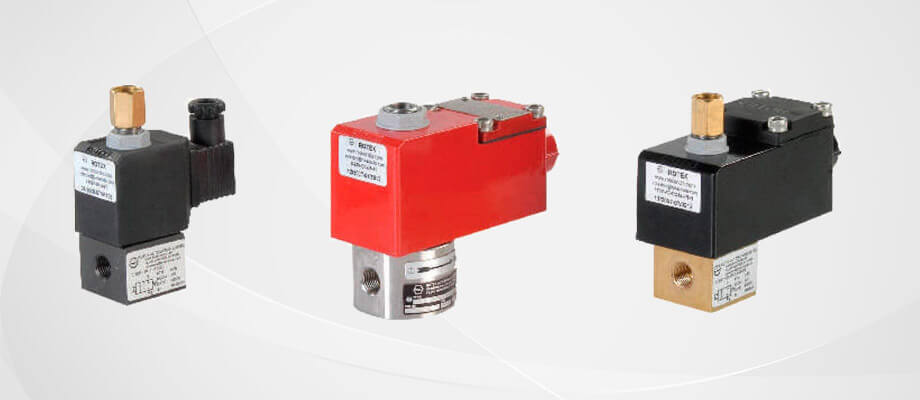
Pilot Operated Solenoid Valve
Pilot operated solenoid valve also known as servo operated solenoid valve, or indirect operated solenoid valve. When the solenoid valve has been electrified, the electromagnetic force can open the pilot holes, so the upper compartment pressure drops rapidly, which creates the differential pressure around the turn off prop (upper pressure is low and lower pressure is high). Therefore, the pressure of medium can push the turn off prop to move upwards, and the valve opens. When the electricity cuts off, the spring force will close the pilot holes, which creates the differential pressure around the turn off prop (upper pressure is high and lower pressure is low), so the medium pressure push the turn off prop move down, and the valve closes.
The pressure range of medium has a high upper limit, therefore, pilot operated solenoid valve can be used in many different equipment, but the fluid medium pressure differential conditions must be obeyed.
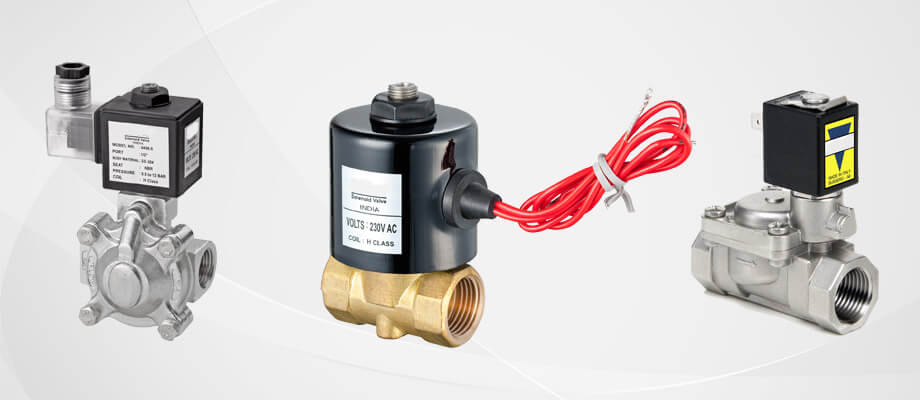
Semi-direct Operated Solenoid Valve
Semi-direct operated solenoid valve is a combination of direct operated solenoid valve and pilot operated solenoid valve. When there is no differential pressure between the outlet and inlet, the electromagnetic force will lift the turn off props of pilot valve and main valve upwards one by one when the semi-direct operated solenoid valve is electrified, and the valve opens. When the pressure difference between valve inlet and outlet reaches the trigger pressure difference, the lower compartment pressure of pilot valve and main valve increases, and the upper compartment pressure drops. Therefore, the pressure difference can push the main valve upwards when the valve is electrified. When the power cuts off, the pilot valve will push the turn off prop down through the spring force or medium pressure, and the valve closes.
Semi-direct operated solenoid valves can also work stably in different pressure conditions, such as vacuum, negative pressure and zero pressure. But as the power of semi-direct operated solenoid valve is large, so this type of solenoid valve must be installed horizontally.
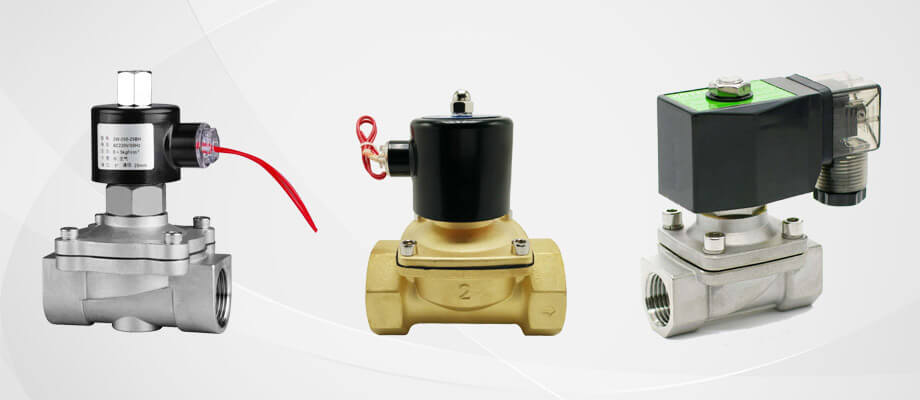
Wet Type Solenoid Valve & Dry Type Solenoid Valve
Despite the former solenoid valve types, solenoid valve can also be divided into wet type solenoid valve and dry type solenoid valve. To mark off the two solenoid valve types, is to find out whether the solenoid iron core is soaked in oil or not.
Dry type solenoid valve does not allow the oil fluids enter the solenoid inside part, therefore, the solenoid plunger which used to push the valve core needs to be sealed, and when plunger moves, it will create larger frictional resistance than wet type solenoid valve.
The iron core and plunger of wet type solenoid valve can work in oil fluids so that there is no need for the sealing treatment, which decreases the frictional resistance of solenoid valve. Therefore, compared to dry type solenoid valves, wet type solenoid valve has better performance.
